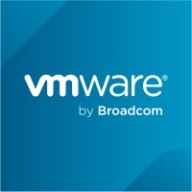

VMware Aria Automation and CloudCheckr operate in the cloud management solutions category. VMware Aria Automation has the upper hand in terms of feature-rich integrations and seamless automation, whereas CloudCheckr leads in cost-efficiency and resource optimization.
Features: VMware Aria Automation excels in orchestrating complex IT processes, offering extensive integration possibilities, and supporting automated deployments. CloudCheckr provides excellent cloud cost management, robust security compliance, and granular reporting for cloud resource optimization.
Room for Improvement: VMware Aria Automation needs improvement in its documentation and integration processes with certain cloud services to enhance usability. CloudCheckr users seek improved system speed when handling large data sets and better integration with non-AWS clouds like Azure and Google Cloud.
Ease of Deployment and Customer Service: VMware Aria Automation presents challenges in deployment due to complexity and necessary infrastructure setup, though it receives praise for its responsive technical support. CloudCheckr, being cloud-based, is easier to deploy but relies on community support, which receives varying feedback.
Pricing and ROI: VMware Aria Automation is priced on the higher side, yet offers substantial value through comprehensive cloud management and automation capabilities. CloudCheckr offers competitive and transparent pricing models based on actual cloud consumption, adding value through cost optimization for managing cloud expenses.
| Product | Market Share (%) |
|---|---|
| VMware Aria Automation | 9.4% |
| CloudCheckr | 1.3% |
| Other | 89.3% |


| Company Size | Count |
|---|---|
| Small Business | 2 |
| Midsize Enterprise | 1 |
| Large Enterprise | 5 |
| Company Size | Count |
|---|---|
| Small Business | 32 |
| Midsize Enterprise | 24 |
| Large Enterprise | 130 |
VMware Aria Automation is a cloud management tool that allows companies to simplify their cloud experience through a modern automation platform. The solution is designed to deliver self-service clouds, multi-cloud automation with governance, and DevOps-based security and infrastructure management. It helps organizations improve IT agility, efficiency, and productivity through its various features.
VMware Aria Automation has multiple use cases that include the following:
VMware Aria Automation Features
VMware Aria Automation has various features that allow users to easily perform operations. Some of the solution's capacities include:
VMware Aria Automation Benefits
VMware Aria Automation offers its users various benefits. Some of the biggest advantages that the solution brings to companies that utilize it include:
Reviews from Real Users
Awais J., CTO/CEO at a tech services company, likes VMware Aria Automation because it saves a lot of time, provides more visibility, and has extensive automation capabilities.
An IT consultant at a government rates VMware Aria Automation highly because the product gives you flexibility to analyze and consume resources.
We monitor all Cloud Management reviews to prevent fraudulent reviews and keep review quality high. We do not post reviews by company employees or direct competitors. We validate each review for authenticity via cross-reference with LinkedIn, and personal follow-up with the reviewer when necessary.